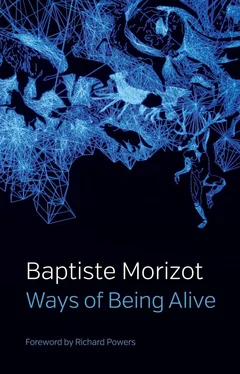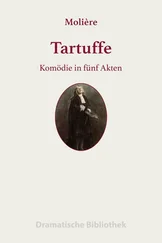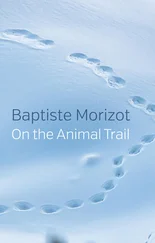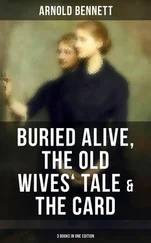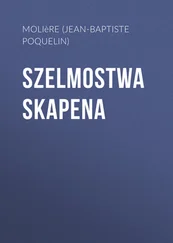The violence of our belief in ‘Nature’ is manifested in the fact that the songs of birds, crickets and locusts, songs in which we are immersed every summer as soon as we move away from the city centre, are experienced in the mythology of modern people as a restful silence . But, for whoever seeks to translate them, to release them from being just white noise, they comprise myriads of geopolitical messages, territorial negotiations, serenades of intimidation, games, collective pleasures, challenges laid down, wordless negotiations. The smallest flowery meadow is a caravanserai – cosmopolitan, multilingual, multispecies, and buzzing with activity. It’s a spaceship on the edge of the universe, where hundreds of different life forms meet and establish a modus vivendi, communicating through sound. On spring nights, we hear the laser songs of nightingales echoing through this spaceship, fighting without violence, competing in beauty to attract their female companions who have followed them in their migration and wander at night through the woods in search of their males; we are surprised by the barking of the deer, the guttural rumbling of intergalactic beasts, howling the despair of desire.
What we call the ‘countryside’ on a summer evening is the noisiest, most colourful souk, populated by many species, stirring with industrious energy; it’s a non-human Times Square on a Monday morning – and the moderns are crazy enough, their metaphysics is complacent enough, to see in it a resourceful silence, a cosmic solitude, a peaceful space. A place empty of real presences, and silent.
Leaving the city, then, does not mean moving away from noise and nuisance into a pastoral idyll; it isn’t a matter of going to live in the countryside, it’s about going to live in a minority . As soon as nature is denaturalized – no longer a continuous flat area, a one-room stage setting, a background against which human tribulations are played out – and as soon as living beings are translated back into beings and no longer seen as things , then the cosmopolitanism of many species becomes overwhelming, almost unbreathable, overwhelming for the mind: human beings have become a minority. This is healthy for the moderns, who have adopted the bad habit of transforming all their ‘others’ into minorities.
From a certain point of view, it is true that we have lost a certain sensibility: massive urbanization, i.e. the fact of not living on a daily basis in contact with many different life forms, has deprived us of the powers of tracking – and I mean tracking in a philosophically enriched sense, as sensibility and openness to the signs of other life forms. This art of reading has been lost: we ‘can’t see a thing’, and the challenge lies in reconstructing paths of sensibility, in order to start learning to see again. If we do not see anything in ‘nature’, it is not only because of our lack of ecological, ethological and evolutionary knowledge, but because we live in a cosmology in which there is supposedly nothing to see, in other words nothing to translate : no meaning to interpret. 5The whole philosophical issue ultimately lies in making it clear and obvious that there is indeed something to see, and rich meanings to translate, in the living environments that surround us. But we need merely take this one step further for the whole landscape to be recomposed. Hence the first text in this collection, which takes the reader on an expedition tracking a pack of wolves through the snows of the Vercors – something between an ethological thriller and an account of a first contact with alien life forms.
The idea of a ‘loss’ of sensibility is, however, ambiguous in its very formulation. The misunderstanding in this idea amounts to the fact that it seems to harbour something like a nostalgic primitivism, which is irrelevant in this case. Things weren’t necessarily better before, and it’s not about going back to ways of living naked in the woods. The point is to invent these ways of life.
Another symptom of the crisis of sensibility, now almost invisible as we have so fully naturalized it, is evident in the category to which we confine animals. Apart from the question of the way we treat cattle (which are not the whole animal realm, nor even typical of it), the great invisible violence of our civilization towards animals is to have made them into figures for children: to be interested in animals isn’t serious, it’s sentimentality. It’s for ‘animal lovers’. It’s regressive. Our relationships with the nature of animals and the animal kingdom are infantilized, primitivized. It’s insulting to animals, and it’s insulting to children.
Our range of sensibility towards animals is reduced to something elastic and amorphous – an abstract and vague beauty, or an infantile figure, or an object of moral compassion. The ethnography of the relationship between humans and living beings among the Tuvans of the Far North, as described by Charles Stépanoff, or the Runa of the Amazon Basin as discussed by Eduardo Kohn, displays an infinitely richer, more plural, nuanced and intense multiplicity: in these environments, animals inhabit the dreams, imaginations, practices and philosophical systems of the natives. 6
Our imagination for life forms has shrunk. Our dreams are poor in living beings; they are not populated by wolves acting as guides or bears acting as mentors, nor by nourishing forests, insects, or the pre-human ancestors who have carried us this far. Opening up a space to imagine new places for them in our imaginations – for example in the form of rituals without mysticism – is the purpose of the second text in this collection. Animals are not worthy simply of childish or moral attention: they are cohabitants of the Earth, with whom we share an ascent, the enigma of being alive, and the responsibility for living decent lives together. The mystery of being a body, a body that interprets and lives its life, is shared by all living beings: it’s the universal vital condition, and it is this which should summon up the most powerful sense of belonging. The animal is thus a privileged intercessor with the original enigma, that of our way of being alive: it displays an irreducible otherness, and at the same time it is close enough to us for countless parallels and convergences to make their presence felt, with mammals, birds and octopuses, and even insects. These are the creatures who make it possible to reconstruct paths of sensibility to living beings in general, precisely because of their borderline position, their intimate otherness towards us. They allow us to sense, in small steps, our affiliations to plants and bacteria, which lie further back in our common genealogy: relatives so foreign that it is less easy to feel alive in the same way as they do. It requires the equivalent of ferrymen or smugglers: animals are intercessors with this kind of power.
And yet we inherit a conception of the world that has downgraded the animal; this is clearly visible in our language, which crystallizes our mental reflexes. All those expressions – ‘to treat someone like an animal’, ‘they behaved like mere animals’ – the whole ladder of contempt, the whole vertical metaphor of the overcoming of an inferior animal nature within us, can be found even in the most everyday corners of our ethics, of our self-representation. It’s incredible. And yet these expressions rest on a metaphysical misunderstanding. Hence the third text in this collection, which tracks our inner animal nature through the history of a Western morality that enjoins us to tame our wild impulses.
These complicated relationships with animal life partly originate in the stranglehold of a dualist philosophical anthropology, which runs from Judeo-Christianity to Freudianism. This Western conception thinks of animal nature as an interior bestiality that humans must overcome in order to ‘civilize’ themselves or, on the contrary, as a purer primal nature from which they replenish themselves, thereby finding a more authentic wildness, freed from social norms. These two imaginaries seem opposed, while nothing could be less true: the latter is merely the reverse of the former, constructed as a symmetrical and opposite reaction. However, we know that reactive creations simply perpetuate the Weltanschauung of the enemy that is forcing us to react: in this case, the hierarchical dualism that contrasts humans with animals.
Читать дальше
